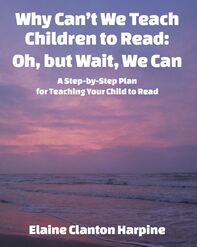My free reading blog continues to feature helpful hints, research, and hands-on suggestions all summer.
Here's the first Helpful Hint, and more are on the way:
Understanding letter sounds is essential for reading. Not all reading programs teach children how to understand the relationship between letters and the sounds they represent.





 RSS Feed
RSS Feed
